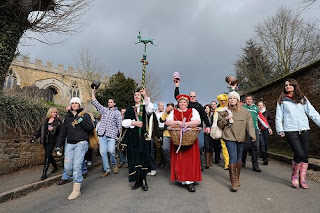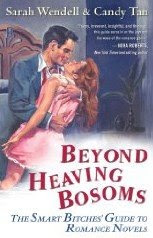 I’m back from Washington Romance Writers Spring Retreat in Leesburg, VA, where I had, as always, a wonderful time. This was a new location for us, the second new location since we lost our lovely-but-shabby Hilltop House in Harper’s Ferry, WV, to a major renovation that will probably price it completely out of our range. This location was lovely, though, with some historic feel that is so nice when you are in an historic state like Virginia.
I’m back from Washington Romance Writers Spring Retreat in Leesburg, VA, where I had, as always, a wonderful time. This was a new location for us, the second new location since we lost our lovely-but-shabby Hilltop House in Harper’s Ferry, WV, to a major renovation that will probably price it completely out of our range. This location was lovely, though, with some historic feel that is so nice when you are in an historic state like Virginia.
The Retreat always starts with a mega-signing in Boonsboro, MD, at Turn the Page Bookstore Cafe, but this year I didn’t sign. Heard it was a great success, though, as always. Weather cooperated for us, probably the most gorgeous weekend yet this Spring – Sunny and warm enough to sit out on the veranda.
After the booksigning, we have a cocktail reception, then dinner (Our guest speaker was Carla Neggers!) and then a panel discussion with our guest agents and editors. This year the agents attending the Retreat were Helen Breitwieser (whose flight came in too late for the panel), Meg Ruley, Elaine English (who is also WRWs attorney, because she is local to us) and Irene Goodman. Our editors included Jennifer Enderlin of St. Martins, and Tracy Farrell of Harlequin, who both almost always attend the Retreat. Kate Duffy of Kensington, another of our mainstay editors, had to cancel at the last minute, much to her regret and ours (we love Kate). Our other attending editors were Deb Werksman from Sourcebooks and Angela James from Samhain. This time the panel discussion did not really reveal any insights into the market or what editors are buying so I can’t give any useful information.
We ask our visiting agents and editors to contribute a little time for interviews with attendees and it was my job to manage the interviews on Saturday, which were held in the old mansion. Elaine English and Jennifer Enderlin took their group appointments outside on the lovely front porch you can see in the photograph.
Even though I miss most of the workshops because of the appointments, I do enjoy helping those waiting for the interviews to be calm, and to see members come out happy and excited because their pitch went well. Every year I have to talk someone out of canceling their appt because they chicken out. They are always happy afterward. (Don’t fear the appointments! They can’t really hurt you and are always useful, even if just for the experience)
This year I also missed the Saturday night dinner, with speaker PC Cast and the WRW special awards. I missed seeing my critique partner Lisa win the “Over and Above” award for her contribution to WRW. And my friend Catherine Kent won one of the Service awards. Mary Kay McComas won the Lifetime Achievement award.
 But I was doing a FUN THING. Helen Breitwieser took her authors out to dinner and we had a lovely lovely time. The restaurant was Vintage 50, on the outskirts of Historic Leesburg, with a gourmet menu and fine wines and a waiter who looked like a young Harrison Ford and whose ambition in life was to play Hans Solo in a Star Wars remake.
But I was doing a FUN THING. Helen Breitwieser took her authors out to dinner and we had a lovely lovely time. The restaurant was Vintage 50, on the outskirts of Historic Leesburg, with a gourmet menu and fine wines and a waiter who looked like a young Harrison Ford and whose ambition in life was to play Hans Solo in a Star Wars remake.

 On Sunday I also missed our big WRW Raffle giveaway. Every year members try to outdo each other and previous years making baskets for auction. We raise LOTS of money considering that the Retreat only has about 120 attendees. These were the baskets my critique group contributed. The “Diamonds of Welbourne Manor” basket was lots of fun; the other is “M’Lady’s Reticule” – all things for your purse and a handmade reticule (by my friend Helen who made my Regency dress) that is not shown.
On Sunday I also missed our big WRW Raffle giveaway. Every year members try to outdo each other and previous years making baskets for auction. We raise LOTS of money considering that the Retreat only has about 120 attendees. These were the baskets my critique group contributed. The “Diamonds of Welbourne Manor” basket was lots of fun; the other is “M’Lady’s Reticule” – all things for your purse and a handmade reticule (by my friend Helen who made my Regency dress) that is not shown.
I missed the raffle because I took Helen Breitwieser to the airport and we had lunch on the way to discuss me and my writing and my career (yay!)
So this morning I really slept late, making up for all this. Next week I’ll do better!
We had great goody bags this year. Here are some of the books that were in it:
Beyond the Heaving Bosom by the Smart Bitches
The Knight’s Return by Joanne Rock (a Harlequin Historical)
She Thinks her Ex is Sexy by Joanne Rock (A Blaze!)
Frederica by Georgette Heyer (a gift from Sourcebooks)
Mr and Mrs Fitzwilliam Darcy by Sharon Lathan (Sourcebooks)
Love with a Perfect Scoundrel by Sophia Nash
To Sin with a Stranger by Kathryn Caskie
A Seduction At Christmas by Cathy Maxwell
The Angel by Carla Neggers (a hardback)
The Write Ingredients, compiled by Lori Foster (recipes from favorite authors- a Cookbook!)










